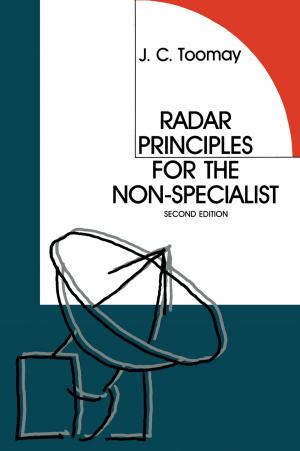The Training Evaluation Process
A Practical Approach to Evaluating Corporate Training Programs
Nonfiction, Reference & Language, Education & Teaching, Educational Theory, Evaluation, Business & Finance, Human Resources & Personnel Management| Author: | David J. Basarab Sr., Darrell K. Root | ISBN: | 9789401129404 |
| Publisher: | Springer Netherlands | Publication: | December 6, 2012 |
| Imprint: | Springer | Language: | English |
| Author: | David J. Basarab Sr., Darrell K. Root |
| ISBN: | 9789401129404 |
| Publisher: | Springer Netherlands |
| Publication: | December 6, 2012 |
| Imprint: | Springer |
| Language: | English |
This book details a unique training evaluation approach developed by David J. Basarab, Sr. currently the Manager of Evaluation at Motorola University. This approach was developed in part based on information from his graduate coursework with Dr. Darrell K. Root, professor of program evaluation and educational administration at the University of Dayton. It enabled Motorola to evaluate their corporate training programs to determine whether money spent on training was an investment or an expense. This evaluation approach is also significant in determining either the effectiveness of or the opportunities to improve corporate training programs. In this text, The Training Evaluation Process, David Basarab and Darrell Root provide commercial industry training with a step-by-step approach to use when evaluating training progrruns, thus allowing training to be viewed as an investment rather than an expense. This text focuses on assessing training programs, so that they may be improved. This approach provides a successful procedure to use when evaluating training programs. Included in the text is a comprehensive explanation of the evaluation model developed by D. L. Kirkpatrick (Kirkpatrick, D. L., November 1959) in which he described four levels of evaluating training progrruns: Level 1 -Reaction: Evaluate to learn participants' perception to the training program. Level 2 -Learning: Evaluate to determine whether participants have learned the course subject matter. Level 3 -Behavior: Evaluate participants' use of newly acquired job skills on the job. Level 4 -Results: Evaluate the organizational impact of training on company's workforce.
This book details a unique training evaluation approach developed by David J. Basarab, Sr. currently the Manager of Evaluation at Motorola University. This approach was developed in part based on information from his graduate coursework with Dr. Darrell K. Root, professor of program evaluation and educational administration at the University of Dayton. It enabled Motorola to evaluate their corporate training programs to determine whether money spent on training was an investment or an expense. This evaluation approach is also significant in determining either the effectiveness of or the opportunities to improve corporate training programs. In this text, The Training Evaluation Process, David Basarab and Darrell Root provide commercial industry training with a step-by-step approach to use when evaluating training progrruns, thus allowing training to be viewed as an investment rather than an expense. This text focuses on assessing training programs, so that they may be improved. This approach provides a successful procedure to use when evaluating training programs. Included in the text is a comprehensive explanation of the evaluation model developed by D. L. Kirkpatrick (Kirkpatrick, D. L., November 1959) in which he described four levels of evaluating training progrruns: Level 1 -Reaction: Evaluate to learn participants' perception to the training program. Level 2 -Learning: Evaluate to determine whether participants have learned the course subject matter. Level 3 -Behavior: Evaluate participants' use of newly acquired job skills on the job. Level 4 -Results: Evaluate the organizational impact of training on company's workforce.















